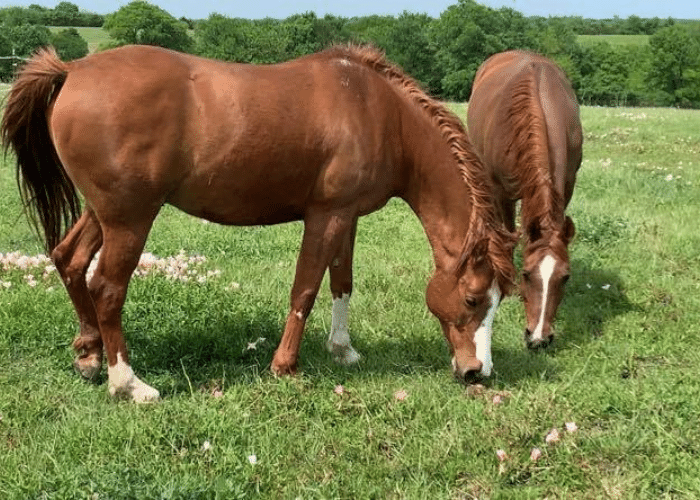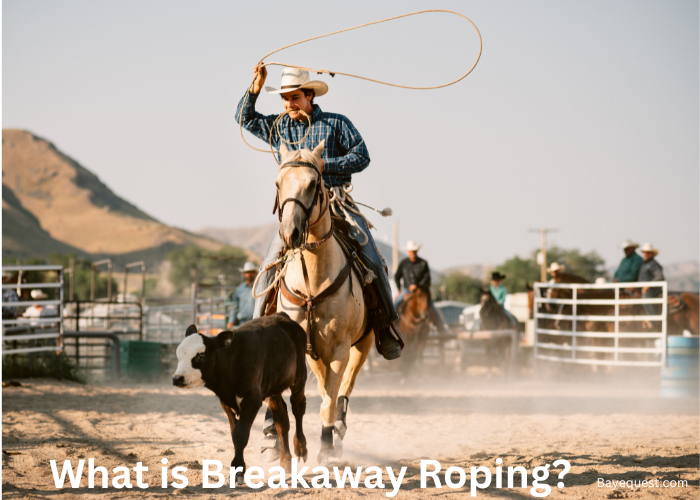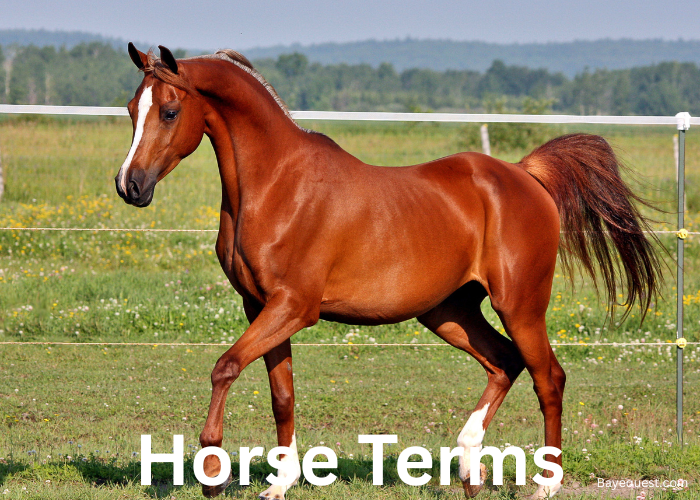The terms sorrel and chestnut often cause confuse, even among experts. While both are shades of red, they have distinct differences.
Sorrel refers to a lighter, coppery red, while chestnut describes a deeper, richer hue.
This blog unravels the mystery between these two colors, offering insights for horse lovers and curious readers alike. Join us as we explore the vibrant shades of sorrel vs. chestnut, one color at a time.
Chestnut Horse Vs Sorrel Horse: Key Takeaway
Sorrel and chestnut are both red-based horse coat colors. Sorrel refers to a lighter, coppery red coat with a mane and tail the same or lighter color. Chestnut describes darker, richer shades of red. In summary, sorrel is lighter and chestnut is darker.
Understanding Horse Coat Colors
Horse coat colors are a fascinating rainbow. But how do these colors come to be? It’s all in the genes. Imagine a giant paint box. Each horse gets its color from this box, mixed and matched by nature.
There are basics, like black, brown, and white. Then, things get interesting with dapples, spots, and stripes. Each horse’s coat is a unique masterpiece, a blend of its parents’ colors and sometimes, a surprise from way back in the family tree.
Why does it matter? Well, for horse folks, knowing these colors is like knowing someone’s name. It tells a part of the horse’s story.
Whether you’re showing horses, breeding them, or just enjoying their beauty, understanding coat colors is key. Plus, it’s just plain fun to look at a horse and know its color’s fancy name.
What is a Sorrel Horse?
A sorrel horse is one with a reddish or coppery coat. Think of the color of a shiny new penny. That’s sorrel.
Their manes and tails? Usually, the same colour or a bit lighter. Sorrels are eye-catching, with their bright, vibrant coats shining in the sun.
This color is pretty common. You’ll see sorrel horses in many breeds, racing across fields or trotting in parades.
But don’t get it mixed up with chestnut. While they might seem similar, each has its own unique charm.
Sorrels stand out with their purely red shades, bringing a splash of color to the equine world. It’s not just a color; it’s a sorrel’s signature.
Famous Sorrel Horses
These famous sorrel horses, from battlefields to Hollywood, have left an indelible mark on history and popular culture. Their stories are a testament to the enduring allure of the sorrel horse.
Little Sorrel
Little Sorrel, often remembered alongside General Stonewall Jackson of the Civil War, was more than just a horse.
He was a symbol of resilience and steadfastness. Despite his small size, Little Sorrel carried Jackson through numerous battles, earning a place in history books.
Champion
Champion, or “The Wonder Horse,” was the faithful companion of the cowboy star Gene Autry. Together, they rode through countless Westerns.
They captured the imagination of audiences and showcased the bond between horse and rider.
Champion wasn’t just a horse. He was a star, with a flair for dramatics and an unmistakable coat that gleamed like copper in the Hollywood sun.
Dollar
Dollar was another cinematic star, but this time under the saddle of John Wayne, “The Duke” himself. Appearing in several films, Dollar and Wayne made an iconic pair.
Dollar’s sorrel coat and calm demeanor made him the perfect partner for Wayne’s rugged on-screen persona.
Sport
Sport might not be as widely recognized as some of the others on this list, but he played a crucial role in the classic Western series, “Bonanza.”
As the mount of Little Joe Cartwright, played by Michael Landon, Sport displayed not just the beauty of a sorrel coat but also the versatility and intelligence of horses.
Champion, Jr.
Following in the hoofprints of the original Champion, Champion, Jr. continued the legacy of Gene Autry’s equine partners.
This sorrel horse captured the imagination of a new generation of fans. It showcased the timeless appeal of a trusty, vibrant-coloured horse in the continuing adventures of the West.
What is a Chestnut Horse?
A chestnut horse sports a coat that ranges from a light, golden red to a deep, rich brownish-red. It’s like the horse version of autumn leaves.
Their manes and tails? They match or go even lighter, sometimes blending into their coat color so smoothly, you can hardly tell where one starts and the other ends.
Chestnut is one of the most common horse colors out there. You’ll find these red beauties in almost every breed, trotting around farms, competing in shows, or taking folks for rides.
What makes them special? It’s their warm, inviting color, a coat that seems to glow in the sunlight.
Despite the similarities to sorrels, chestnuts carry their own unique flair. They’re like the cozy, familiar feeling of sitting by a fire on a chilly night.
A chestnut horse isn’t just about color; it’s about the warmth and depth it brings to the equine rainbow.
Famous Chestnut Horses
These chestnut horses, each in their own right, left indelible marks on the world. They weren’t just champions. They were the heartbeats of their fans, symbols of excellence, and the embodiment of the spirit of competition.
Man O’ War
Man O’ War was a legend. A chestnut with a fiery spirit and speed to match. He won races, hearts, and became a hero in the horse racing world.
His name? It’s still whispered with awe. Man O’ War wasn’t just fast; he was history in the making.
Ready Teddy
Ready Teddy jumped his way into history. This chestnut horse, with Mark Todd on his back, conquered the Olympics.
Together, they leaped over obstacles and raced through courses, clinching gold. Ready Teddy was more than an athlete; he was an Olympic icon.
Secretariat
Secretariat, or “Big Red,” was a chestnut powerhouse. He didn’t just win the Triple Crown; he smashed records doing it.
Each race was a spectacle, a display of strength, speed, and heart. Secretariat wasn’t just a horse; he was a legend, a chestnut comet blazing across the track.
Sorrel Vs Chestnut Horse: Head-to-Head Comparison
Sorrel and Chesnut dazzle in red shades but aren’t quite similar. Here’s a head-to-head comparison of these two giants:
Chestnut Vs Sorrel: Color (Shade and tone variations)
Chestnut encompasses a broader spectrum of red-based colors. These range from pale, almost yellowish-red hues to deep, rich browns that nearly appear burgundy.
The chestnut coat’s intensity and depth can vary influenced by factors like season, age, and health. The color is warm and earthy, often with a glossy sheen that catches the eye under the sun.
Chestnut horses may exhibit a slight variation in shade across their body, with some areas appearing darker or lighter.
Sorrel, in contrast, refers to a more reddish-copper tone. This color is vibrant and striking, with less shade variation than in chestnuts.
Sorrels are often described as having a bright, fiery look, with their coats resembling the lively color of a fox. Unlike chestnuts, sorrels rarely display a significant gradient in their coat color.
Sorrel Vs Chestnut: Mane and tail
The mane and tail of a sorrel horse usually match the body’s color closely, creating a harmonious and unified appearance. In some cases, the mane and tail might be slightly lighter, adding subtle contrast without diverging too much from the overall color scheme.
Chestnut horses, however, can have a wider range of mane and tail colors. This may be from light flaxen to deep red that matches their coat.
This variation adds to the chestnut’s unique appeal, giving each horse a distinct look that can be as varied as the shades of their coats.
Sorrel Horse Vs Chestnut: Temperament and Characteristics
There’s no scientific evidence linking coat color to temperament. However, anecdotal tales and equestrian folklore often attribute certain personality traits to horses based on their color.
Chestnut horses, particularly mares, are sometimes stereotyped as fiery and spirited. Sorrel horses, while less commonly discussed in terms of temperament, are often thought of as dependable and steady.
These characterizations reflect more individual experiences and cultural narratives than any inherent qualities tied to coat color.
Chestnut Horse Vs Sorrel: Genetics and Variations
Both sorrel and chestnut colors are the result of the recessive e allele, which suppresses the production of black pigment. The difference in shade and tone between sorrel and chestnut horses is likely due to the influence of other genes and modifiers that affect the expression of red pigments in the coat.
The genetics of horse coat colors is complex, with multiple genes interacting to determine the final appearance.
Sorrel and chestnut horse colors can appear in any breed, although certain breeds may favor one shade over another due to selective breeding practices.
Chestnuts Vs Sorrels: Associations and clubs’ definitions
Equestrian organizations and breed registries often have their own definitions for sorrel and chestnut. This is usually based on tradition and the specific characteristics valued within each breed.
For example, in the American Quarter Horse Association, sorrel is described as a type of chestnut. However, the term is used to denote horses with a more reddish-copper coat.
In contrast, other organizations might not distinguish between sorrel and chestnut at all, classifying all red horses under one category.
How to Identify Sorrel and Chestnut Horses
Identifying sorrel and chestnut horses is like becoming a bit of a color detective. Here’s how to spot the differences in a way that feels as easy as chatting over the fence at the barn.
Look at the shades
Start by checking out the horse’s overall color. Sorrel horses are like a fresh penny: bright, coppery, and pretty consistent in color from nose to tail.
Chestnuts, though? They’re a box of chocolates. You might get anything from a light golden hue to a deep, rich red that looks like it came straight from a fine wine.
Check the mane and tail
Next up, glance at the mane and tail. Sorrels often have manes and tails that blend right in, color-wise.
Chestnuts might throw you a curveball here. Their manes and tails can vary quite a bit, sometimes lighter, sometimes darker, but always adding a bit of extra flair to their look.
Observe in different lights
Lighting can play tricks on you. Take a step back and look at the horse in both the bright sunlight and the shade.
Those red tones might shift a bit depending on the light. This trick can help you catch the subtler hues and decide if you’re looking at a sorrel glow or a chestnut depth.
Ask about the horse
When in doubt, chat it out. Horse owners love to talk about their horses.
Ask about the horse’s background, breed, or even directly about its color. You might get a story along with your answer, and that’s half the fun.
Remember, it’s a spectrum
Lastly, don’t sweat it too much. Sorrel and chestnut are on a spectrum, and even experts can have a friendly debate over a horse’s color.
It’s part of what makes the horse world interesting. Plus, whether sorrel or chestnut, each horse brings its own charm and personality to the stable.
The Genetics of Horse Colors
The genetics of horse colors is like a fascinating puzzle where DNA plays the role of puzzle pieces. At the heart of it, a few key genes mix and match in various ways to create all the beautiful coat colors we see in horses.
Every horse color starts with two basic shades: black and red. Think of these as the base colors on an artist’s palette. The gene that decides if a horse will be more towards black or red is called the Extension gene.
If it says, “Let’s go red,” you get chestnuts and sorrels. If it’s all black, the horse will have a black-based coat, like blacks and bays.
Now, let’s sprinkle in some white. There’s a gene that decides if a horse will have white markings, like stars, blazes, or socks. But then, there’s another exciting twist. Some genes can spread a lot more white across the body, leading to spotted horse breeds.
Imagine adding a drop of water to paint; it gets lighter, right? That’s what dilution genes do to horse colors. They dilute the basic black or red to create softer hues like palominos, buckskins and duns.
A magical gene can turn any color horse into a grey as they age. A horse might be born black, chestnut, or any other color, but if it has the grey gene, it will gradually get whiter as it grows older.
All these colors and patterns get passed down from horse parents to their foals. It’s a mix-and-match scenario, with each parent contributing half of the genetic instructions.
This is why breeding can be a bit of a guessing game, trying to predict the color of the foal based on the genetic lottery.
Beyond these, there are a few wild card genes that can create unique effects, like the roan pattern or the sooty shading that adds a darker overlay to the coat.
Cultural and Historical Significance of Chestnut and Sorrel Horses
When you step back through history, chestnut and sorrel horses trot right alongside human stories. Each color has its own tales and traditions.
Chestnut Horses: Symbols of Power
Chestnut horses have been icons of courage and nobility throughout history. Their vibrant colors made them more than just mounts. They were statements of power and pride from Europe’s medieval battlefields to the samurai of Japan.
Beyond wars, folklore casts them as wise guides, navigating heroes with insight and intuition.
Sorrel Horses: Family and farm companions
Sorrel horses, known for their bright coats, represent home and warmth. They were part of the family on farms and ranches, dependable in work and gentle at day’s end.
Native American cultures valued them for their spirit and connection to the earth, seeing in them the sacred life fires.
The Common Thread: Endurance and Inspiration
Both colors symbolize the resilience of horses throughout history. From ancient fields to modern tracks, their enduring presence shows their integral role in human life.
Artists and writers have long drawn inspiration from their hues, adding them to landscapes and stories as embodiments of nature’s beauty and force.
Sorrel Vs Chestnut Verdict
Choosing between sorrel and chestnut horses is like trying to pick between sunsets and autumn leaves. Both are stunning in their own right. Sorrels dazzle with their bright, coppery coats, embodying warmth and vibrancy.
Chestnuts captivate with their deep, rich hues, offering a spectrum of reds that speak to nobility and strength. Ultimately, the verdict isn’t about which is better but about personal preference.
Whether drawn to the fiery spirit of a sorrel or the majestic presence of a chestnut, each horse brings its own beauty and character to the stable.
Interesting read: What Color is a Bay Horse?
Conclusion
In the world of horses, sorrel and chestnut colors represent beauty and diversity. While the terms may vary by region or riding discipline, at their heart, sorrels and chestnuts share the same genetic tapestry.
It’s not about which horse is better but rather the unique stories and qualities each brings. Whether it’s the warm, glowing red of a sorrel in a Western sunset or the rich, deep hue of a chestnut in an English field, both colors celebrate horses’ majestic nature.
In the end, every horse, regardless of color, holds its own special place in the equestrian world.








